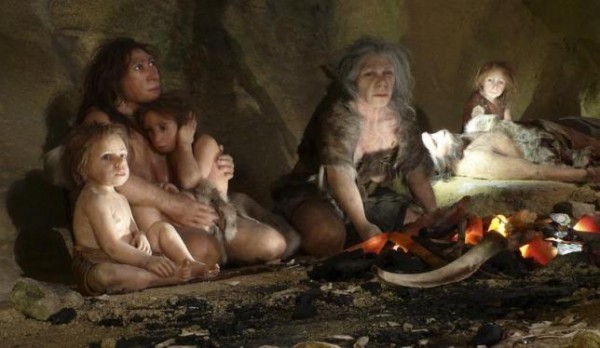New Ancient DNA Study Reveals True Ice Age European Population History
| Ellie Froilan | | May 03, 2016 02:48 AM EDT |
(Photo : Reuters) Ice Age made an impact to the migration of populations and modern Europeans.
A new genetic study of pre-historic humans revealed the two significant shifts in population across Europe.
Professor David Reich from Harvard Medical School in Boston, United States and his colleagues have analyzed the genomes of 51 individuals who lived between 45,000 years ago and 7,000 years ago. Findings, published in the journal Nature, detailed that how the Ice Age made an impact to the migration of populations and modern Europeans who came from one founding population that lived in North West Europe roughly 35,000 years ago.
Like Us on Facebook
However, this founding group was displaced. It was found to have been living in south west Europe 19,000 years ago. As the ice started retreating, this same group spread northwards and repopulated Europe.
At the end of the last Ice Age some 19,000 years ago, people thought to have come from Spain spread northward. Then some 14,000 years ago, populations from Turkey and Greece spread westward into Europe and replaced the first group.
“What we see, is a population history that is no less complicated than that in the last 7,000 years, with multiple episodes of population replacement and immigration on a vast and dramatic scale, at a time when the climate was changing dramatically,” Reich said in a statement.
The analysis also suggests that Ice Age Europeans had dark complexions and brown eyes until about 14,000 years ago, when blue eyes began to spread across the population. Pale skin began to appear after 7,000 years ago. Earlier populations also had more Neanderthal DNA than present-day people, which is consistent with the idea that it may have had harmful effects on modern humans and was lost over time through natural selection.
These discoveries were made possible by a technique in-solution hybrid capture enrichment, which enabled them to extract and study DNA from ancient human remains without fear of the samples being contaminated by anyone who had previously handled the specimens.
Previously, there were only four samples of prehistoric European modern humans available for analysis. Reich compared it trying to sum up a movie with four still images. The 51 samples of the researchers allow them to follow the narrative arc and get a clear sense of the dynamic changes that happened over time.
Tagsdna study, Genetics, Europe, Ice age, Ice Age European, European history
©2015 Chinatopix All rights reserved. Do not reproduce without permission
EDITOR'S PICKS
-

Did the Trump administration just announce plans for a trade war with ‘hostile’ China and Russia?
-

US Senate passes Taiwan travel bill slammed by China
-

As Yan Sihong’s family grieves, here are other Chinese students who went missing abroad. Some have never been found
-

Beijing blasts Western critics who ‘smear China’ with the term sharp power
-

China Envoy Seeks to Defuse Tensions With U.S. as a Trade War Brews
-

Singapore's Deputy PM Provides Bitcoin Vote of Confidence Amid China's Blanket Bans
-

China warns investors over risks in overseas virtual currency trading
-

Chinese government most trustworthy: survey
-

Kashima Antlers On Course For Back-To-Back Titles
MOST POPULAR
LATEST NEWS
Zhou Yongkang: China's Former Security Chief Sentenced to Life in Prison

China's former Chief of the Ministry of Public Security, Zhou Yongkang, has been given a life sentence after he was found guilty of abusing his office, bribery and deliberately ... Full Article
TRENDING STORY

China Pork Prices Expected to Stabilize As The Supplies Recover

Elephone P9000 Smartphone is now on Sale on Amazon India

There's a Big Chance Cliffhangers Won't Still Be Resolved When Grey's Anatomy Season 13 Returns

Supreme Court Ruled on Samsung vs Apple Dispute for Patent Infringement

Microsoft Surface Pro 5 Rumors and Release Date: What is the Latest?












